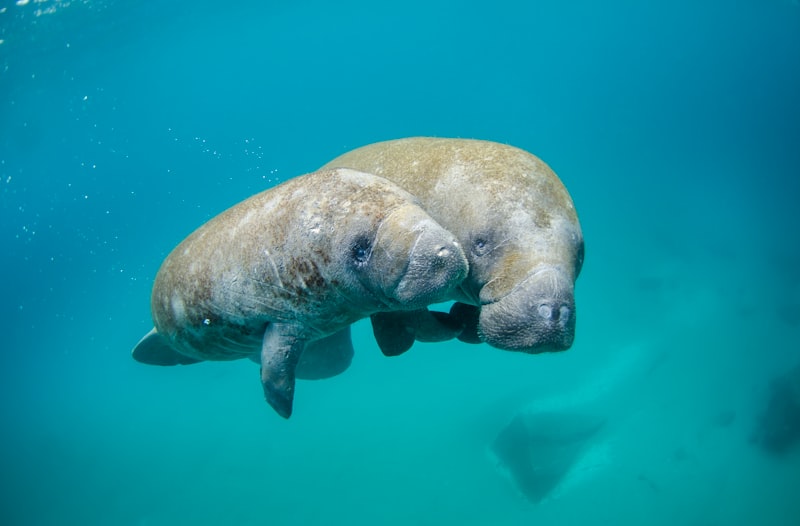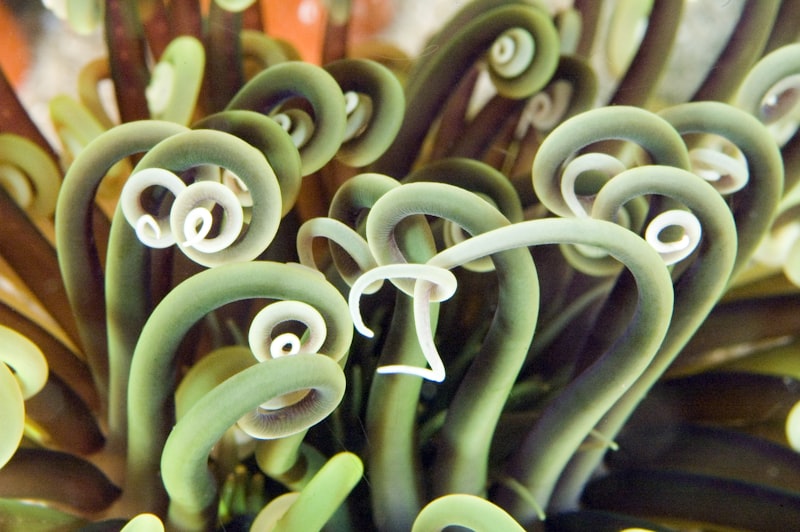Take the Great Barrier Reef Marine Park in Australia, a beacon of MPA success. Spanning over 344,400 square kilometers, it’s a sprawling sanctuary for countless species, from vibrant corals to majestic sea turtles. Here, stringent regulations ensure that human activities are carefully monitored and managed, preserving the delicate balance of this natural wonder.
Closer to home, the Channel Islands National Marine Sanctuary off the coast of California exemplifies effective MPA management. By restricting fishing practices and boat traffic, the sanctuary has seen populations of marine mammals and seabirds rebound, offering a glimmer of hope amidst global environmental challenges.
MPAs not only protect biodiversity but also bolster local economies through ecotourism. Imagine snorkeling through crystal-clear waters teeming with colorful fish in the Apo Island Marine Reserve in the Philippines. Here, community-led conservation efforts have revived fish stocks and empowered local communities to reap the benefits of sustainable tourism.
But it’s not just about preserving what we have; MPAs also serve as laboratories for scientific research, unveiling new insights into marine ecosystems and climate change resilience. For instance, the Chagos Archipelago in the Indian Ocean provides scientists with invaluable data on coral resilience and adaptation to warming seas.
From Decline to Revival: How Marine Protected Areas Are Saving Ocean Life
Imagine the ocean as a bustling cityscape where every species plays a vital role, from the smallest plankton to the majestic whales. However, decades of overfishing, pollution, and habitat destruction have taken their toll, pushing many marine species to the brink of extinction and degrading once-vibrant coral reefs and underwater habitats.

In response to this crisis, Marine Protected Areas have become a beacon of hope. By designating specific regions where fishing, drilling, and other human activities are carefully managed, these areas provide a safe refuge for marine life to recover and flourish. They serve as nurseries for fish, allowing populations to replenish and spill over into surrounding waters where they can be harvested sustainably.

The impact of MPAs extends far beyond their boundaries. By safeguarding critical habitats like coral reefs, seagrass beds, and mangrove forests, these protected areas help stabilize marine ecosystems and enhance resilience against climate change impacts such as ocean acidification and rising sea temperatures. They also support ecotourism, providing economic opportunities for local communities while preserving natural heritage.
The journey from decline to revival is not without its challenges. Effective management and enforcement are essential to ensure MPAs fulfill their conservation goals. Collaboration among governments, scientists, local communities, and stakeholders is key to overcoming these challenges and expanding the network of protected areas worldwide.
As we navigate the complexities of ocean conservation, Marine Protected Areas stand as a testament to our ability to reverse the tide of environmental degradation. They offer a blueprint for sustainable ocean management, demonstrating how proactive measures can lead to the recovery of marine ecosystems and ensure a healthier future for generations to come.
Breaking Waves: Inspiring Conservation Successes in Marine Protected Areas
Imagine diving into the crystal-clear waters of a Marine Protected Area, where vibrant coral reefs teem with life. These underwater gardens, bustling with colorful fish and intricate marine creatures, are a testament to the success of conservation initiatives. By designating these areas, we not only protect ecosystems but also ensure sustainable livelihoods for coastal communities that depend on marine resources.
The story of MPAs is one of resilience and dedication. It’s about governments, scientists, and local communities coming together to preserve our oceans’ health. Through stringent regulations and active management, MPAs help mitigate the impacts of overfishing, pollution, and habitat destruction. They serve as laboratories for studying marine ecology and climate change resilience, providing invaluable insights into safeguarding our planet’s future.
But the journey of conservation is not without its challenges. Balancing environmental protection with socio-economic needs requires careful planning and collaboration. MPAs showcase this delicate balance, where conservation goals align with the aspirations of local communities for sustainable development.
As we navigate the complexities of ocean conservation, MPAs remind us of our responsibility to future generations. They embody our commitment to preserving marine biodiversity and ensuring that the rhythm of the breaking waves continues to resonate with life. Through these protected areas, we celebrate our successes in conservation and reaffirm our dedication to a thriving, resilient ocean ecosystem.
Turning the Tide: Success Stories of Marine Protected Areas Around the Globe
Marine Protected Areas (MPAs) are like nature’s safe havens in the vast ocean, where marine life thrives under careful guardianship. Imagine them as underwater cities bustling with life, where fish dart around coral gardens, sea turtles glide gracefully, and colorful reefs paint the ocean floor. These areas are not just ordinary stretches of water; they are sanctuaries crucial for preserving biodiversity and restoring fragile ecosystems.
Take the Great Barrier Reef Marine Park in Australia, for instance. Spanning over 344,000 square kilometers, it’s a monumental example of what concerted conservation efforts can achieve. By strictly regulating fishing and tourism activities, this MPA has seen coral populations stabilize and marine species rebound. It’s a beacon of hope amidst global concerns over coral bleaching and ocean acidification.
In the Caribbean, the Bahamas’ Exuma Cays Land and Sea Park stands as a testament to effective preservation strategies. Established in 1958, it was one of the world’s first MPAs. Today, its crystal-clear waters and thriving marine communities attract eco-tourists and researchers alike. By prohibiting fishing and anchoring, this park has allowed fish populations to flourish, demonstrating how sustainable tourism and conservation can go hand in hand.
Moving to the Pacific, the Phoenix Islands Protected Area (PIPA) in Kiribati showcases a different dimension of marine conservation. Encompassing a vast expanse of nearly 408,250 square kilometers, PIPA is one of the largest MPAs on Earth. Its remoteness has shielded it from human impact, preserving its pristine reefs and abundant fish stocks. Studies have shown that well-managed MPAs like PIPA not only protect biodiversity but also support resilience against climate change impacts.
Closer to home, the Monterey Bay National Marine Sanctuary in California is a model of community engagement in marine conservation. Stretching from Marin to Cambria, this sanctuary blends scientific research with public outreach and education. It’s a living laboratory where scientists study marine mammals, migratory birds, and kelp forests, while visitors learn about ocean stewardship. By involving local communities, this MPA fosters a sense of ownership and responsibility towards marine conservation.
These success stories underscore the importance of MPAs in safeguarding our oceans’ health. From Australia’s vibrant coral reefs to California’s coastal wonders, each protected area offers a glimpse into what’s possible when we prioritize conservation. As threats like overfishing and climate change loom large, these havens provide hope and inspiration for a sustainable future.
Guardians of the Seas: Impactful Conservation Efforts in Marine Protected Areas
MPAs are designated zones where marine life thrives under special conservation regulations. These areas not only safeguard diverse species but also preserve critical habitats like seagrass beds and mangrove forests. By regulating human activities within their boundaries, MPAs aim to restore and maintain ecological balance.
Imagine MPAs as underwater havens, akin to wildlife sanctuaries on land. They provide safe havens where fish can breed without disturbance, helping to replenish fish stocks beyond their borders. This spillover effect benefits nearby fisheries, supporting sustainable fishing practices and ensuring food security for coastal communities.
But MPAs do more than protect marine life; they serve as laboratories for scientific research. Scientists study these areas to understand ocean dynamics, track climate impacts, and develop strategies for conservation. Their findings contribute to global efforts to combat climate change and preserve biodiversity.
Yet, creating and managing MPAs isn’t without challenges. Stakeholders, including governments, local communities, and industries, must collaborate to ensure effective management and enforcement of conservation rules. Balancing conservation goals with socioeconomic interests requires innovative approaches and ongoing dialogue.
As awareness grows about the importance of healthy oceans, so does the need for more MPAs. These marine sanctuaries symbolize hope for future generations, illustrating humanity’s commitment to protecting our blue planet. Through collective action and responsible stewardship, we can continue to be guardians of the seas, ensuring that marine life thrives for years to come.
Underwater Resilience: Celebrating Marine Protected Areas’ Conservation Triumphs
Imagine a world beneath the waves where marine life thrives undisturbed, where corals bloom in vibrant colors, and schools of fish dance through crystal-clear waters. This vision is not just a dream but a reality in the realm of Marine Protected Areas (MPAs). These underwater havens are vital sanctuaries safeguarding our oceans’ biodiversity, ensuring the resilience of marine ecosystems against human impacts.
MPAs, often likened to underwater national parks, play a crucial role in conservation efforts worldwide. By designating specific areas where human activity is regulated or restricted, these zones allow marine species to flourish and habitats to regenerate. The result? A remarkable resurgence in marine life, from endangered sea turtles finding safe nesting grounds to coral reefs recovering from bleaching events.
The triumphs of marine conservation within MPAs are awe-inspiring. They provide refuge for iconic species like dolphins, whales, and sharks, offering them a refuge from overfishing and habitat destruction. Moreover, these areas serve as living laboratories for scientists studying climate change impacts on ocean health, providing invaluable data for global conservation strategies.
But the journey to preserving our oceans’ treasures is not without challenges. Effective management and enforcement are critical to the success of MPAs, ensuring that regulations are respected and ecosystems remain intact. Public awareness and support also play a pivotal role, fostering a sense of stewardship and responsibility among communities worldwide.
As we celebrate the resilience of Marine Protected Areas, it’s crucial to recognize their role not just in preserving marine biodiversity but also in safeguarding our planet’s future. By protecting these underwater wonders today, we ensure that future generations can continue to marvel at the beauty and diversity of our oceans, reminding us that conservation triumphs are achievable through dedication and collective action.
This article aims to highlight the importance of Marine Protected Areas in a conversational tone, emphasizing their impact on marine conservation and the need for continued support and awareness.
Frequently Asked Questions
What are some successful examples of Marine Protected Areas around the world?
Discover successful Marine Protected Areas (MPAs) worldwide, highlighting exemplary cases like the Great Barrier Reef Marine Park in Australia, the Papahānaumokuākea Marine National Monument in Hawaii, and the Galápagos Marine Reserve in Ecuador. These areas showcase effective conservation strategies and biodiversity preservation efforts through sustainable management practices and community engagement.
How do Marine Protected Areas contribute to marine conservation?
Learn how Marine Protected Areas (MPAs) play a crucial role in marine conservation efforts. Discover their impact on biodiversity preservation, fisheries management, and ecosystem resilience. Explore how MPAs help mitigate habitat destruction and support sustainable ocean use.
What are Marine Protected Areas (MPAs) and why are they important?
Marine Protected Areas (MPAs) are designated ocean zones where human activities like fishing and mining are restricted or prohibited to conserve marine ecosystems and biodiversity. They are crucial for safeguarding marine species, habitats, and supporting sustainable fisheries.
How do Marine Protected Areas benefit local communities and economies?
Learn how Marine Protected Areas (MPAs) enhance local communities and economies by preserving marine biodiversity, supporting sustainable fisheries, promoting tourism, and safeguarding coastal habitats. Explore the positive impacts of MPAs on livelihoods and economic growth.
What challenges do Marine Protected Areas face in achieving conservation goals?
Marine Protected Areas (MPAs) face challenges such as inadequate enforcement, funding shortages, and stakeholder conflicts, hindering their ability to achieve conservation goals. These areas require robust management strategies, international cooperation, and community engagement to overcome these obstacles.


